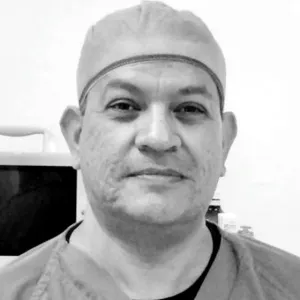Everything You Need to Know about Obsessive Compulsive Disorder (OCD)


Written and verified by the doctor Nelton Abdon Ramos Rojas
Obsessive compulsive disorder (OCD), also known as obsessive compulsive neurosis, is a psychiatric disorder that makes people develop thoughts, feelings, ideas, obsessions and repetitive behaviors that make them repeat actions over and over again. The latter is called compulsions.
Consequently, those who suffer from OCD suffer anxiety and panic attacks when something bothers them.
In this article, we’ll take a look at this disorder, what causes it, and how to treat it.
Causes

Frequently, it is estimated that 2% of the population suffers from OCD. Generally, the symptoms develop in people between the ages of 20 and 40 years old.
While the specific causes are still not known, scientists have discovered certain brain anomalies that cause it.
Symptoms

Overall, the most common symptoms are obsessive thoughts. These thoughts that are repetitive and persistent images that the mind produces. The person may try to ignore them. However, since this causes a lot of anxiety, they feel the uncontrollable need to behave in a certain way.
Overall, we can classify the obsessions into four categories:
- Interrogative (the need to check some things over and over again),
- Fears or phobias (fears of diseases, certain things, etc.),
- Impulsive (aggressive or sexual),
- Obsessive ideas (need for order, symmetry, religious issues, time issues, etc).
These obsessions also manifest in compulsions. These are mental acts that the patient starts as a way to defend themselves from obsessive ideas. Because of this, the person feels the need to repeat this behavior multiple times without feeling fulfilled.
In general, people with OCD may also have ticks. This refers to involuntary movements that come from different muscle contractions in the body.
Diagnosis

A patient’s behavior should indicate if both symptoms consume the majority of their day or if they cause significant anxiety that affects their daily activities.
However, it’s important to note that the obsessions are not consequences of pharmacological treatments. They are actually related with other psychiatric disorders.
The diagnosis should also indicate if the person has family history with the same disorder or if it is related with involuntary body gestures.
Finally, the specialists can evaluate patients with questionnaires such as the obsessive compulsive scale from Yale-Brown, among others.
Treatment for obsessive compulsive disorder
Principally, OCD is treated with cognitive behavioral therapy. In this therapy, the patient is exposed to situations that purposely trigger obsessive thoughts. By doing this, they will start to control their anxiety and their urge to carry out an impulsive act.
In addition, there are also psycho-pharmacological treatment that include antidepressants.
Finally, education about this disorder is provided for patients and their families, as well as training in social skills and activities.
All cited sources were thoroughly reviewed by our team to ensure their quality, reliability, currency, and validity. The bibliography of this article was considered reliable and of academic or scientific accuracy.
- Zaragozano, J. F., Usábel, M. Z., Andrés, L. C., & López, J. L. O. (2008). Trastorno obsesivo-compulsivo. Acta Pediatrica Espanola. https://doi.org/10.31434/rms.v3i11.154
- Gavino, A. (2010). Tratando … trastorno obsesivo-compulsivo. Psicología.
- Yaryura-Tobías, J. A., & Neziroglu, F. (2001). Teorema del trastorno obsesivo-compulsivo. Salud Mental. https://doi.org/10.4090/juee.2008.v2n2.033040
- Kodysz, S., & Esquirol, E. D. (2010). Trastorno Obsesivo-Compulsivo (T.O.C.). Breve Revisión Bibliográfica. Hojas Clinicas de Salud Mental. https://doi.org/http://dx.doi.org/10.1016/j.sbspro.2011.04.509
This text is provided for informational purposes only and does not replace consultation with a professional. If in doubt, consult your specialist.








